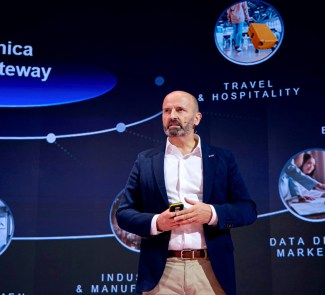Project Tango could offer interesting solutions in the area of mobiles. A team of developers from Google and Motorola are developing this Android-based project.
Every so often, Google introduces us to one of the projects that it’s working on. At this point, everyone knows about Google Glass, which came directly out of the Google X labs. Project Ara is another one of these interesting concepts, but this time it’s a result of the purchase of Motorola (recently sold to Lenovo). In this case, Google kept the project and stayed out of the package sold to the Chinese multinational. Other experimental projects that Google is working on that we’ve seen videos of are, to name a few, driverless vehicles and contact lenses that monitor glucose levels.
The latest project that Google is working on and has announced publicly is called Project Tango. It consists of a mobile phone capable of capturing the surrounding environment in 3D. Last week, we explained how the police in Australia were starting to map the environment with the help of a laser at crime scenes to find incriminating evidence, and in this case, Project Tango uses its cameras and sensors to study the area around the user.
In order to run the scan, the mobile has been equipped with a powerful chip called Myrian 1, from Movidius. This chip is installed in an Android device that is equipped with a camera, a depth sensor that allows it to capture space in three dimensions and a second camera to control movements. This hardware can capture distances, depth and spaces between objects in real time, by taking 250,000 3D measurements per second. For now, the device is still under development, which means that by the time a commercial unit becomes available, the characteristics may have changed quite a bit.
As you can see in the presentation video, this technology opens up some very interesting possibilities. From helping the blind locate objects in a room and move inside buildings without getting lost, to applications in the gaming world with experiences similar to augmented reality. It could also help accelerate the introduction of robots into work and personal settings by helping them to map their surroundings in three dimensions. For example, it could be very useful in the case of the RoboEarth project, which involves robots in settings such as hospitals. And just like the laser in the Australian technology, it might even help solve crimes.
The project is still in the internal development phase, but the first 200 units will soon be distributed to developers so that they can contribute ideas and new concepts for potential uses. Interested developers can register to request a device at the project website.







